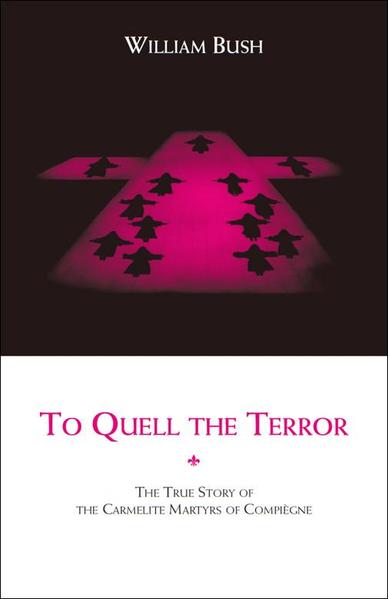I recently read To Quell the Terror: The Mystery of the Vocation of the Sixteen Carmelites of Compiegne by William Bush and published by ICS Publications.
Recounts the dramatic true story of the Discalced Carmelite nuns of Compiegne, martyred during the French Revolution’s ‘Great Terror’ and known to the world through their fictional representation in Gertrud von Le Fort’s Song at the Scaffold and Francis Poulenc’s Dialogues of the Carmelites.
As you might expect, the actual story is much more amazing than any fictional accounts. The more familiar story and opera introduce characters that are ahistorical, which is par for the course.
What I found most interesting of this very well researched book, is just how much these Carmelite nuns and others associated with this Convent were preparing themselves for this eventuality. This slow march towards the guillotine developed over time as the French government animosity towards Catholic priests and religious ramped up over time.
The back story also includes a prophetic element where one of the Discalced Carmelite nuns of Compiegne who lived a century before these events, left writing that they later interpreted as predicting their martyrdom. A prediction included the number of people associated with the Convent who would not be part of this martyrdom.
This element became an exciting dynamic in how they were responding to these events as they were evicted out of their Convent and worked to stay together despite the wish of the government. The author has brought out a good deal of information on these women and their various backgrounds.
The story of Mother Teresa of St. Augustine, their prioress, is especially intriguing. The extent she went to, to protect them and keep them together. The tension of both protecting these nuns from a possible martyrdom and preparing them for it. She was willing to give her own life to protect her charge, while also questioning her own motivations in this regard.
This review is all the summary that I want to provide to keep myself from spelling out everything I loved about the story and how it told. You, of course, know ahead of time how it all ends, and yet I felt so involved in the story from start to finish.
The background of the Reign of Terror and the so-called enlightenment places the context of these events. There are so many disparate tensions with an anti-Catholic fervor in the name of enshrining reason – which they tried to do more than just figuratively. This background information enhances the telling of this story, yet like many actual events are stranger than fiction.

